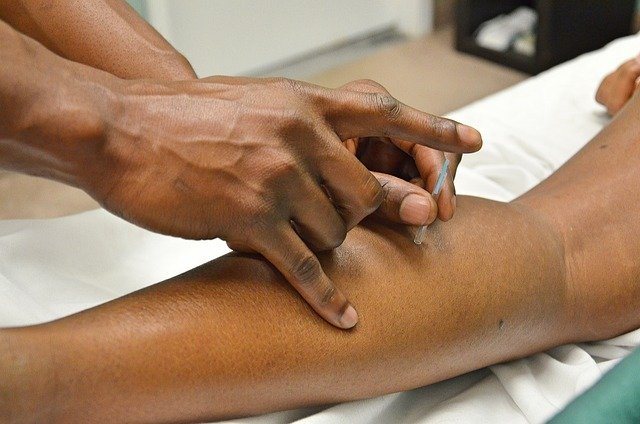Comprehensive Guide to Understanding Skin Allergies
Skin allergies affect millions of Americans each year, causing uncomfortable symptoms that can significantly impact daily life. These allergic reactions occur when your immune system overreacts to normally harmless substances, resulting in various skin manifestations including rashes, hives, and inflammation. Understanding the underlying mechanisms, recognizing the warning signs, and knowing how to effectively manage these conditions can help you maintain healthier skin and improve your overall quality of life.

What Are the Common Signs and Symptoms of Skin Allergies?
Skin allergy signs and symptoms can vary significantly depending on the type of allergic reaction and individual sensitivity levels. The most recognizable symptom is the development of a red, inflamed rash that may appear anywhere on the body. This rash often presents as raised bumps, patches of discolored skin, or clusters of small blisters.
Itching is another hallmark symptom that can range from mild irritation to intense scratching urges that interfere with sleep and daily activities. Many people also experience swelling, particularly around the eyes, lips, or affected skin areas. The skin may feel warm to the touch and appear scaling or flaky as the reaction progresses.
Additional symptoms include burning sensations, stinging pain, or general skin tenderness. In more severe cases, individuals might develop weeping lesions or skin that appears cracked and dry. These symptoms can appear within minutes of exposure to an allergen or may take several hours to fully manifest.
What Are the Primary Skin Allergy Causes?
Skin allergy causes encompass a wide range of environmental and lifestyle factors. Contact allergens represent one of the most common categories, including substances like nickel found in jewelry, fragrances in personal care products, and preservatives in cosmetics. Many people develop sensitivities to latex, certain fabrics, or cleaning products through repeated exposure.
Food allergies can also manifest through skin symptoms, with common triggers including nuts, shellfish, dairy products, and certain fruits. Environmental allergens such as pollen, dust mites, and pet dander may cause skin reactions in sensitive individuals, particularly during specific seasons or in certain living conditions.
Plants like poison ivy, poison oak, and certain flowers can trigger contact dermatitis in susceptible people. Additionally, some individuals experience photosensitive reactions where their skin becomes allergic to sunlight when combined with certain substances or treatments. Stress and hormonal changes can also exacerbate existing skin allergies or trigger new reactions.
How to Effectively Manage Skin Allergies?
Learning how to manage skin allergies requires a comprehensive approach that combines prevention, treatment, and lifestyle modifications. The first step involves identifying and avoiding known triggers whenever possible. This might mean switching to hypoallergenic personal care products, wearing protective clothing, or modifying your diet to eliminate problematic foods.
Maintaining proper skin care routines can significantly reduce the severity of allergic reactions. Use gentle, fragrance-free cleansers and moisturizers to maintain your skin’s natural barrier function. Cool compresses can provide immediate relief for inflamed areas, while keeping your skin well-hydrated helps prevent additional irritation.
Creating an allergen-free environment at home involves regular cleaning to reduce dust and pet dander, using air purifiers, and selecting household products carefully. Keep a symptom diary to track potential triggers and patterns in your reactions. This information proves valuable when working with healthcare professionals to develop an effective management strategy.
During active flare-ups, avoid scratching affected areas to prevent secondary infections and scarring. Wear loose-fitting, breathable clothing made from natural fibers when possible. Consider stress management techniques, as emotional stress can worsen skin allergy symptoms and delay healing processes.
| Treatment Type | Provider/Method | Typical Cost Range |
|---|---|---|
| Dermatologist Consultation | Local dermatology clinics | $200-$400 per visit |
| Allergy Testing | Allergist offices nationwide | $300-$800 for comprehensive testing |
| Over-the-counter Antihistamines | Pharmacies (CVS, Walgreens, Rite Aid) | $10-$25 per month |
| Prescription Topical Treatments | Healthcare providers | $50-$200 per prescription |
| Patch Testing | Specialized allergy centers | $400-$600 for full panel |
Prices, rates, or cost estimates mentioned in this article are based on the latest available information but may change over time. Independent research is advised before making financial decisions.
Understanding skin allergies empowers you to take control of your skin health and minimize the impact of allergic reactions on your daily life. By recognizing symptoms early, identifying personal triggers, and implementing appropriate management strategies, most people can successfully reduce the frequency and severity of their skin allergy episodes. Remember that persistent or severe symptoms warrant professional medical evaluation to ensure proper diagnosis and treatment planning.
This article is for informational purposes only and should not be considered medical advice. Please consult a qualified healthcare professional for personalized guidance and treatment.




